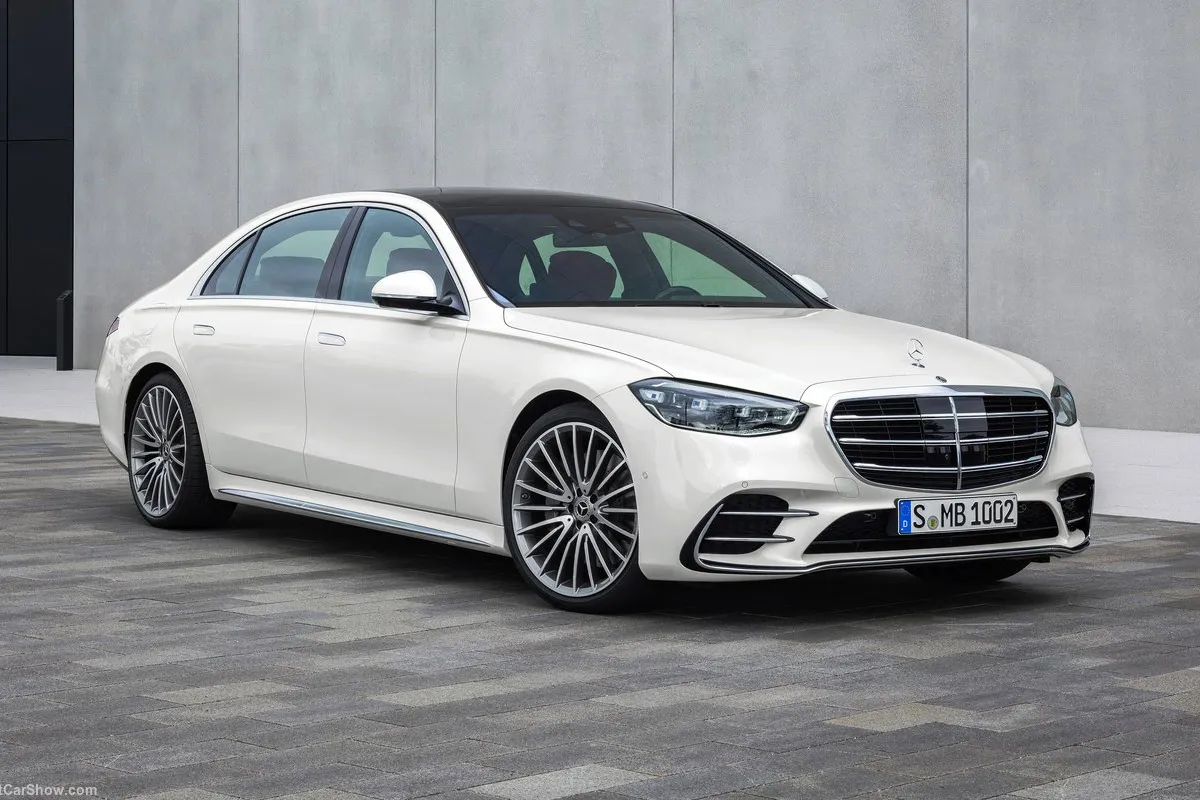In an era when cars are packed with ever-advancing tech, powerful engines, and luxurious interiors, one overlooked—but highly practical—metric is the turning radius.
This measurement, which tells you how tightly a vehicle can turn in a circle, affects everything from parking and U-turns to maneuvering through narrow streets or crowded garages.
In the case of sedans—often the go-to for commuters, rideshare drivers, and city dwellers—turning radius plays a bigger role than most realize.
A tighter turning radius means you can navigate sharp corners more easily, perform quick direction changes, and park with far less effort. For urban drivers, it can be the difference between a stress-free drive and constant frustration.
On the flip side, some sedans, particularly large luxury models or sport-tuned variants, have surprisingly wide turning circles, making them feel unwieldy in tight quarters despite their refined performance.
In this comparison, we’ll spotlight five sedans with the best turning radius—vehicles that offer supreme maneuverability and city convenience.
Then, we’ll look at five sedans with the widest turning radius, which can be more challenging to handle in daily urban environments.
Whether you’re a city driver or a rural commuter, understanding turning capability can help you make a smarter sedan choice.
Also Read: 5 Used Cars With Zero Rod Knock Risk and 5 That Are Engine Time Bombs
5 Sedans With Best Turning Radius
When it comes to selecting a sedan, most buyers focus on horsepower, fuel economy, safety features, or interior tech. But one of the most underrated aspects of everyday driving is how easily your car can maneuver, especially in tight spaces.
That’s where turning radius comes in. Defined as the smallest circular turn a vehicle can make, a short turning radius translates directly to better agility—something drivers truly appreciate in dense city traffic, narrow lanes, or crowded parking lots.
The best sedans for turning radius aren’t necessarily the smallest or cheapest. Instead, they’re the ones engineered with thoughtful steering geometry, lightweight frames, and compact suspension designs that allow them to pivot tightly and efficiently.
This makes life easier when doing U-turns on two-lane roads, squeezing into parallel parking spots, or navigating a multi-level parking garage.
Even suburban or highway-focused drivers can appreciate the advantage of a sedan that feels nimble and easy to maneuver in unpredictable traffic conditions.
In this list, we explore five sedans that excel at tight turning. Each model is selected for offering precise, low-effort steering and a short curb-to-curb turning diameter—typically under 36 feet. This means fewer multi-point turns, more confident city driving, and less wear on your patience during rush hour.
Whether you’re a rideshare driver, city dweller, or simply someone who values maneuverability, these five sedans with outstanding turning radius figures are proof that small details can have a big impact on daily driving enjoyment. And in many cases, they deliver this tight handling without sacrificing space, comfort, or style.
Let’s begin with a look at the Honda Civic, a perennial favorite that continues to impress with both its agility and everyday livability.
1. Honda Civic — Nimble and Urban-Friendly
The Honda Civic has long been a benchmark in the compact sedan segment, praised for its reliability, efficiency, and balance between fun and function. But one of its less celebrated yet incredibly practical features is its tight turning radius.
With a curb-to-curb turning circle of just 35.4 feet, the Civic is exceptionally nimble, making it ideal for urban environments and tight parking situations.
This small turning radius is possible thanks to the Civic’s compact footprint, lightweight steering, and well-tuned suspension geometry.
Whether you’re weaving through congested downtown traffic, making a quick U-turn on a narrow street, or pulling into a tight parallel spot, the Civic makes the process feel seamless. The steering is quick but never twitchy, allowing drivers to maintain control and confidence even during fast maneuvers.
Even better, the Civic doesn’t compromise cabin space or driving refinement to achieve this agility. The current-generation model offers a spacious interior for its class, along with a mature design and solid ride comfort.
It also comes with modern driver-assistance features such as Honda Sensing, which includes lane-keeping assist and adaptive cruise control—enhancing its usefulness as a commuter car.
Drivers who value efficiency and practicality will also appreciate the Civic’s great fuel economy, intuitive infotainment, and solid resale value.
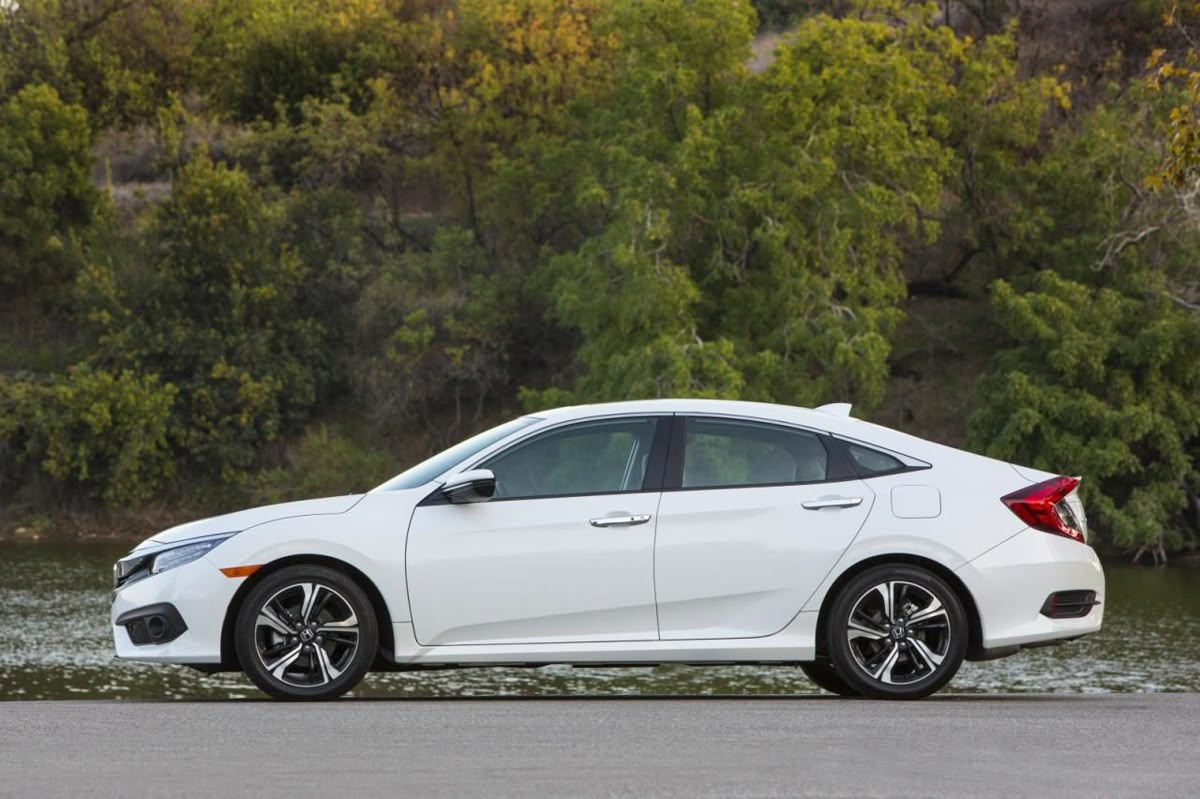
But what’s often underappreciated is how the Civic simply makes driving easier in tight situations, particularly for newer drivers or those who frequently navigate urban sprawl.
For city dwellers or suburbanites who spend a lot of time in congested areas, the Honda Civic’s exceptionally short turning radius becomes a true day-to-day asset.
It’s a rare example of a vehicle that offers fun, comfort, and urban convenience all in one package.
In short, if you’re looking for a sedan that feels easy to live with in the tightest spots—without giving up practicality or performance—the Civic deserves your attention.
2. Toyota Corolla — Compact Precision with Everyday Usability
The Toyota Corolla is often viewed as a practical, no-nonsense compact sedan—and that’s a fair assessment. But beyond its reputation for reliability and efficiency, the Corolla also excels in urban maneuverability, thanks in part to its impressive turning radius of just 35.6 feet.
This makes it one of the most agile sedans in its class, especially when navigating congested city streets or making tight parking maneuvers.
Toyota’s engineers have prioritized a balance between steering ease and control. The Corolla’s electric power steering system is light at low speeds, which means you can twist into narrow alleys or make U-turns with minimal effort.
Combine that with the sedan’s compact wheelbase and smart suspension tuning, and you get a sedan that feels comfortable in dense traffic or narrow parking structures, even in its larger trims.
Another big win is the consistency across trims. Whether you opt for the base LE or the sportier SE and XSE models, the Corolla’s tight turning characteristics remain intact.
That makes it a smart pick for drivers who want predictable handling across different use cases—from commuting to weekend errands.
And while maneuverability is one of its core strengths, the Corolla doesn’t give up the basics. You still get ample legroom in both rows, a smooth ride, Toyota’s full suite of Safety Sense driver aids, and strong fuel economy. It’s a car that’s both easy to drive and easy to live with.
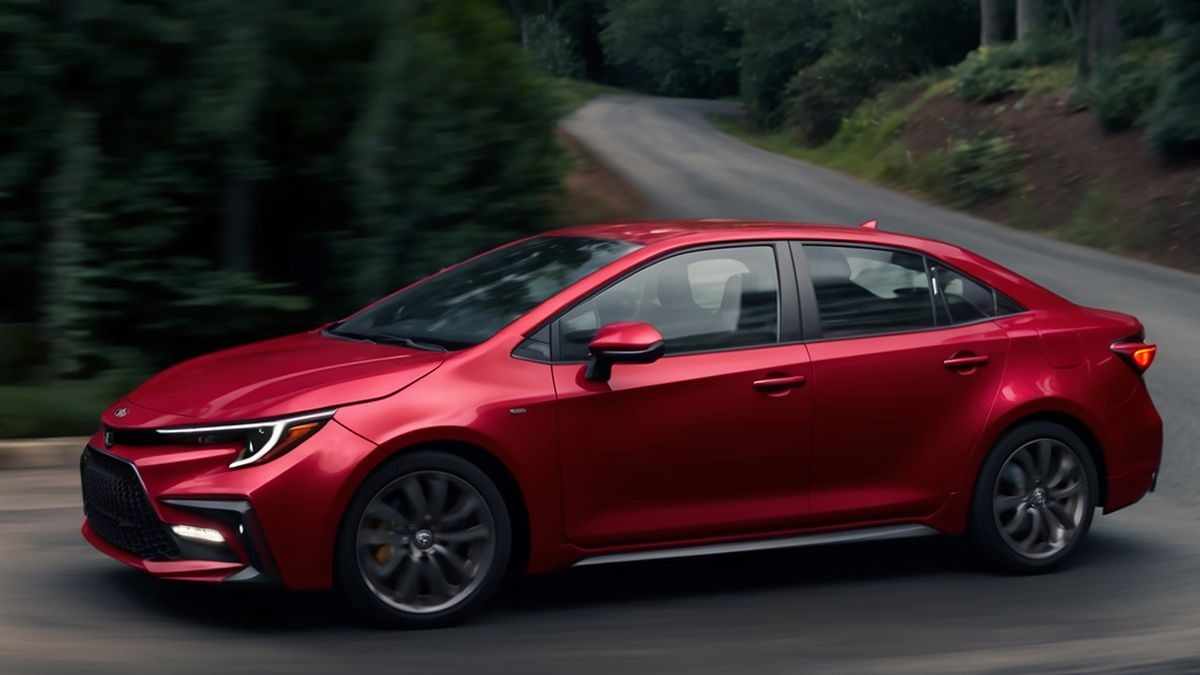
The Corolla’s approachable nature also makes it ideal for newer drivers. Those learning to park, navigate roundabouts, or execute quick turns will find the steering feedback reassuring and manageable. For older drivers, the Corolla’s nimbleness reduces the stress of tight driving situations.
In summary, the Toyota Corolla may not scream performance or excitement, but its short turning radius is a quiet strength that significantly enhances its real-world usability.
For urban dwellers, commuters, or anyone who frequently navigates tight corners and parking spots, the Corolla remains a top-tier contender in compact maneuverability.
3. Hyundai Elantra — Style Meets Sharp Maneuverability
The Hyundai Elantra has undergone a dramatic transformation in recent years, evolving from a modest compact into a bold, angular sedan loaded with tech and personality.
But beneath that daring design lies a nimble and maneuverable chassis, aided by a turning radius of approximately 35.4 feet—putting it among the most agile sedans in its class.
Hyundai has smartly engineered the Elantra’s suspension and steering to deliver sharp low-speed handling, making it easy to park, perform U-turns, and slip through narrow streets.
Whether you’re in tight urban settings or trying to reverse out of a tricky parking garage, the Elantra’s short turning circle works in your favor.
The steering is light and responsive at slow speeds, but firms up appropriately as you accelerate, creating a sense of control without ever feeling twitchy.
This nimbleness doesn’t come at the expense of passenger space or ride quality. The Elantra offers one of the roomiest cabins in the compact sedan segment, with ample legroom in both front and rear seats.
Even tall passengers can ride comfortably, and the cargo area is generous for a sedan of this size. That means you get city-friendly agility without compromising practicality.
Another strong point is the Elantra’s broad range of trims. From the efficient base SE model to the sporty N Line or the hybrid variant, Hyundai ensures the sedan’s turning ease remains a constant, regardless of performance or drivetrain.
Drivers looking for added fun without losing maneuverability will especially enjoy the Elantra N, which maintains a respectable turning radius despite its performance tuning.
Also notable is Hyundai’s inclusion of advanced features even in base trims—like lane keeping assist, blind spot monitoring, and a user-friendly infotainment system.
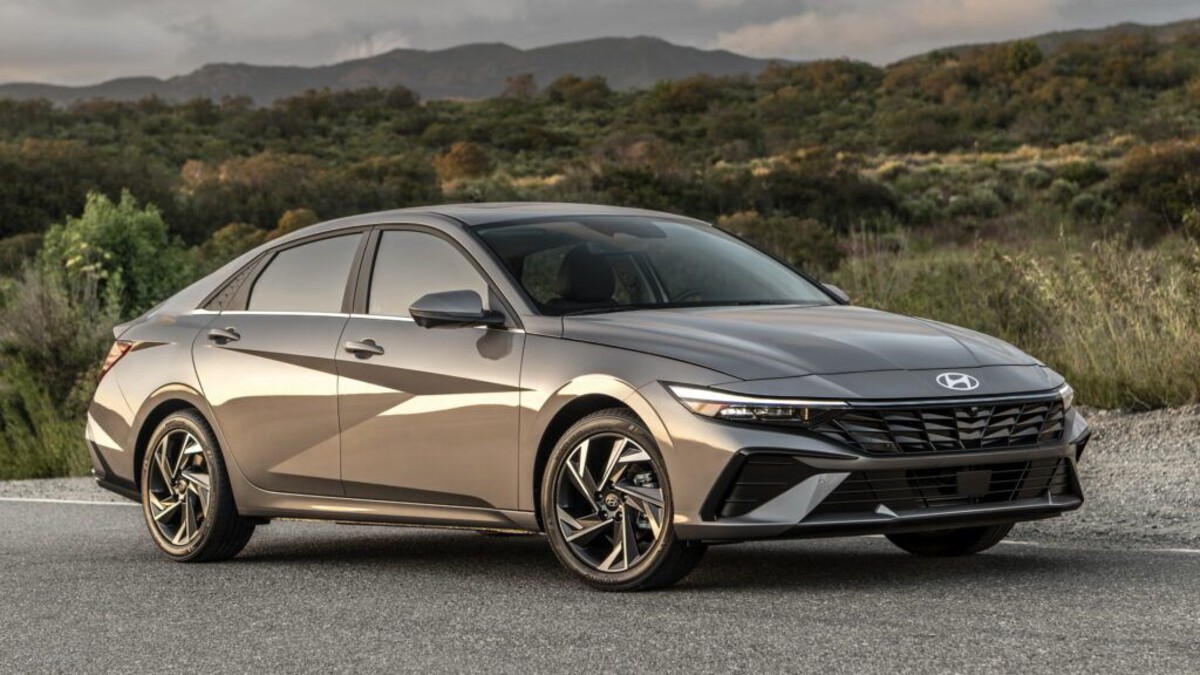
For younger drivers, or those wanting a stylish vehicle that’s just as functional in a downtown parking lot as it is on the highway, the Elantra checks every box.
In conclusion, the Hyundai Elantra proves that you don’t need to sacrifice style or space for nimble handling.
With its compact turning circle and responsive steering, it’s a smart, user-friendly choice for drivers who live or work in tight spaces but still want a car that looks and feels modern.
4. Nissan Versa — Budget-Friendly and Incredibly Maneuverable
The Nissan Versa has always appealed to budget-conscious shoppers seeking affordability and basic practicality.
But surprisingly, this subcompact sedan delivers something that many luxury vehicles struggle with: a remarkably tight turning radius.
With a curb-to-curb diameter of just 34.8 feet, the Versa is one of the most maneuverable sedans on the market, outclassing many competitors—even in higher segments—when it comes to city agility.
What makes this figure especially impressive is that the Versa achieves it without feeling unstable or twitchy. The steering system is calibrated for easy control at low speeds, and the car’s compact dimensions make it a breeze to park, turn, or thread through narrow alleys.
This is ideal for urban drivers, delivery professionals, or students who frequently navigate tight lots or parallel parking scenarios.
Despite being an entry-level car, the Versa doesn’t feel cheap behind the wheel. Recent models have seen a serious upgrade in terms of interior quality, with comfortable seating, a refined cabin layout, and even features like Apple CarPlay and driver-assistance tech available on higher trims.
You’ll also find automatic emergency braking and rear cross-traffic alert, which enhance its usability in tight city spaces where turning radius truly matters.
The rear seat space is a bit limited—as expected in a subcompact—but still manageable for shorter trips or occasional passengers.
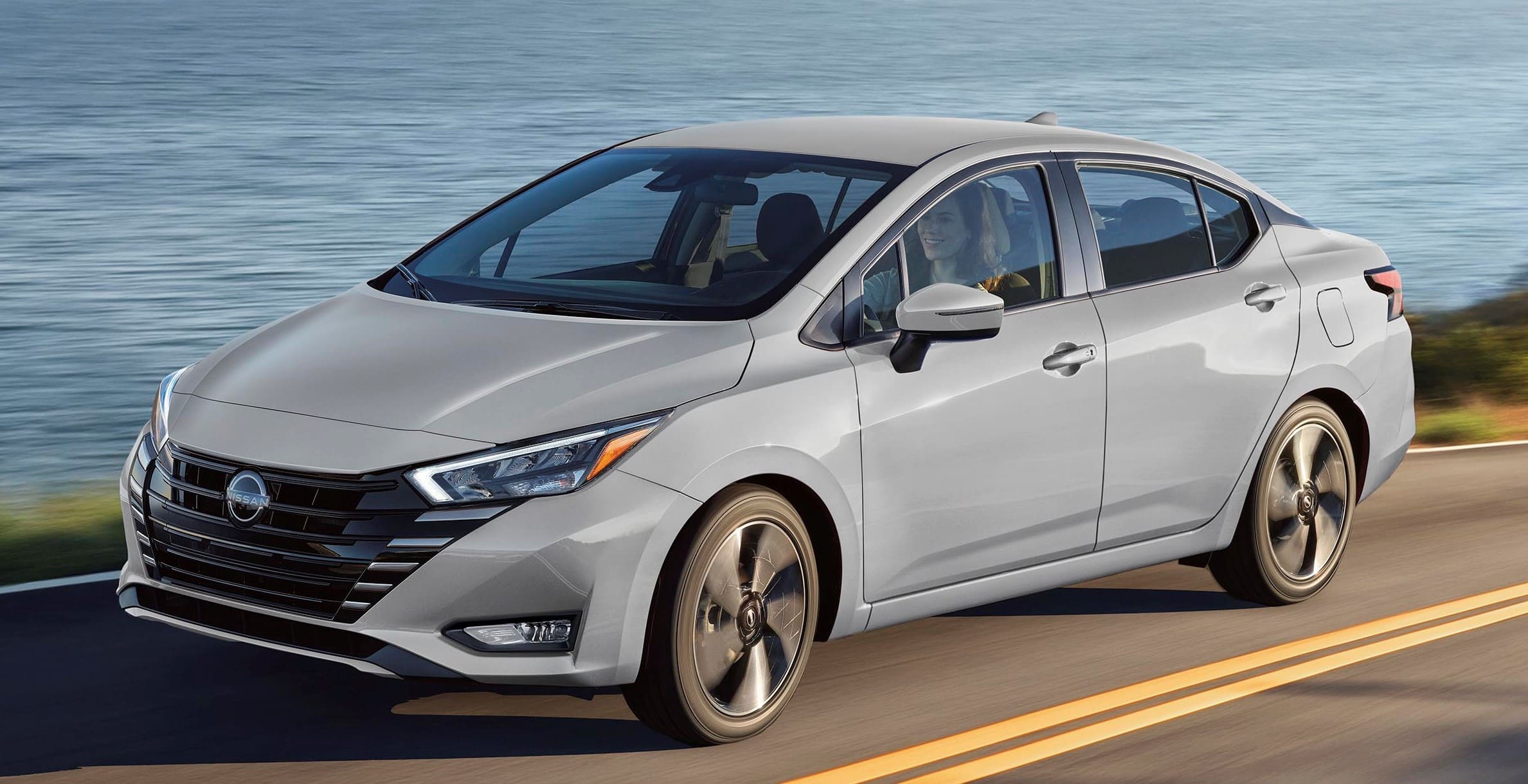
Where the Versa really excels is in its blend of fuel efficiency and maneuverability, making it perfect for first-time buyers, daily commuters, or anyone needing a simple, dependable vehicle that won’t make parking a chore.
It’s also one of the most affordable sedans to own and maintain, meaning the Versa delivers value not just in MSRP, but also in everyday drivability.
That’s what makes its nimble handling all the more impressive—it isn’t just a bonus, it’s a core advantage in real-world driving.
In short, the Nissan Versa may be small and inexpensive, but when it comes to turning performance, it plays in the big leagues. For tight turns, tricky parking spots, and confident maneuvering, few sedans can match what the Versa delivers at this price point.
5. BMW 2 Series Gran Coupe — Premium Agility in a Compact Package
The BMW 2 Series Gran Coupe offers a rare combination in today’s luxury car landscape: refined styling, performance pedigree, and a tight turning radius.
With a curb-to-curb turning circle of approximately 35.1 feet, it competes not only with other luxury sedans but also with many mainstream compacts when it comes to maneuverability—making it one of the most agile premium sedans you can buy today.
BMW is known for engineering its vehicles with a keen focus on handling, and the 2 Series Gran Coupe is no exception. It uses front-wheel drive or all-wheel drive depending on trim, but retains that precise, responsive steering feel BMW drivers expect.
Combine that with a short wheelbase and compact dimensions, and you get a car that feels planted on highways yet incredibly nimble in tight city settings.
This sedan is tailor-made for urban professionals who want something stylish, quick, and easy to park.
Whether you’re navigating city streets, making a U-turn in a crowded neighborhood, or squeezing into a compact garage, the 2 Series Gran Coupe feels purpose-built for the task.
And yet, it also delivers when the road opens up—offering up to 301 horsepower in the M235i xDrive trim, turning tight agility into true driving excitement.
Inside, you’ll find a well-appointed cabin featuring premium materials, iDrive infotainment, and high-end finishes, even in base models. There’s ample room up front, although rear passengers may find space slightly snug—something common in sport-oriented luxury sedans.
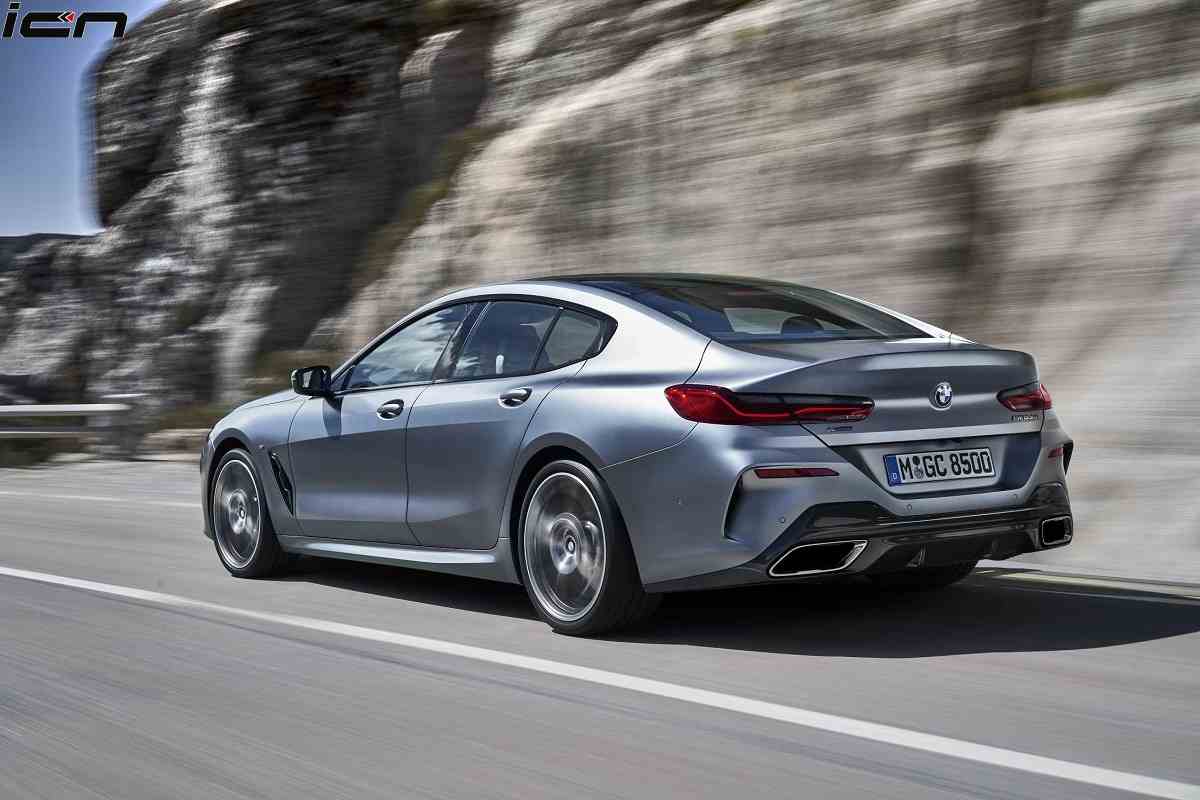
Still, the compactness that limits back seat legroom contributes directly to its tight turning radius and everyday maneuverability, so it’s a deliberate trade-off. For those who prioritize ease of driving without giving up premium appeal, that compromise may be more than worth it.
Overall, the BMW 2 Series Gran Coupe is the rare luxury sedan that delivers both tight urban handling and spirited highway performance.
If you’re shopping in the premium segment but don’t want the headache of wide turning circles and bulky bodywork, this sedan proves you don’t need to go big to go bold—or to turn tight.
5 Sedans With the Widest Turning Radius
While a tight turning radius is a blessing for daily driving, especially in urban environments, the opposite can be frustrating.
Some sedans, despite offering premium features, refined cabins, and robust performance, suffer from a wide turning radius—making them feel less agile in tight situations.
Whether due to long wheelbases, larger bodies, or sport-oriented suspensions, these cars require more space to complete a full U-turn, complicating parking, navigating alleyways, and making quick course corrections.
A wide turning circle doesn’t necessarily mean a bad car. In fact, many of the sedans on this list are flagship luxury or performance models that offer a high-end experience, but that also trade low-speed maneuverability for size, comfort, or dynamic tuning.
Still, this limitation becomes apparent in real-world settings—like city parking garages, drive-thrus, or three-point turns in residential neighborhoods—where these vehicles feel cumbersome compared to more nimble alternatives.
It’s especially important for prospective buyers who live in cities or suburbs with tighter roads, or who plan to use their sedans for commuting, ride-sharing, or family errands.
The inconvenience of needing an extra lane to turn around may not be obvious during a test drive, but it can become an annoyance over time.
In this section, we’ll explore five sedans with the widest turning radius, looking at why they perform this way and what that means for drivers.
Some may offer luxurious rides or thrilling acceleration, but they also come with a maneuverability trade-off that should be considered before buying.
Let’s begin with the Chrysler 300, a full-size American sedan known for comfort and presence—but not for its nimbleness.
1. Chrysler 300 — Big Comfort, Bigger Turning Radius
The Chrysler 300 has long stood as a symbol of American full-size sedans—bold, powerful, and unapologetically large. It offers a smooth ride, abundant interior space, and old-school rear-wheel-drive performance.
But one area where the 300 has always lagged behind is in tight maneuverability. With a curb-to-curb turning radius of about 38.9 feet, the Chrysler 300 ranks among the widest-turning sedans on the road.
This generous turning circle stems from its long wheelbase, wide body, and rear-wheel-drive layout. While that formula contributes to a stable and composed highway ride, it becomes a burden in city driving.
Performing a U-turn often requires more space than a standard two-lane road allows, and navigating narrow parking garages or making sharp corners in urban areas can feel cumbersome. Even simple tasks like parallel parking take more time and effort, especially for less experienced drivers.
Despite this, the Chrysler 300 remains a strong seller in its niche, thanks to its comfortable cabin, quiet ride, and available V8 engine. The interior is spacious and upscale, with ample room for both front and rear passengers.
Long-distance driving is where the 300 truly shines—it glides effortlessly on the highway, and its weight and size lend a sense of security and refinement.
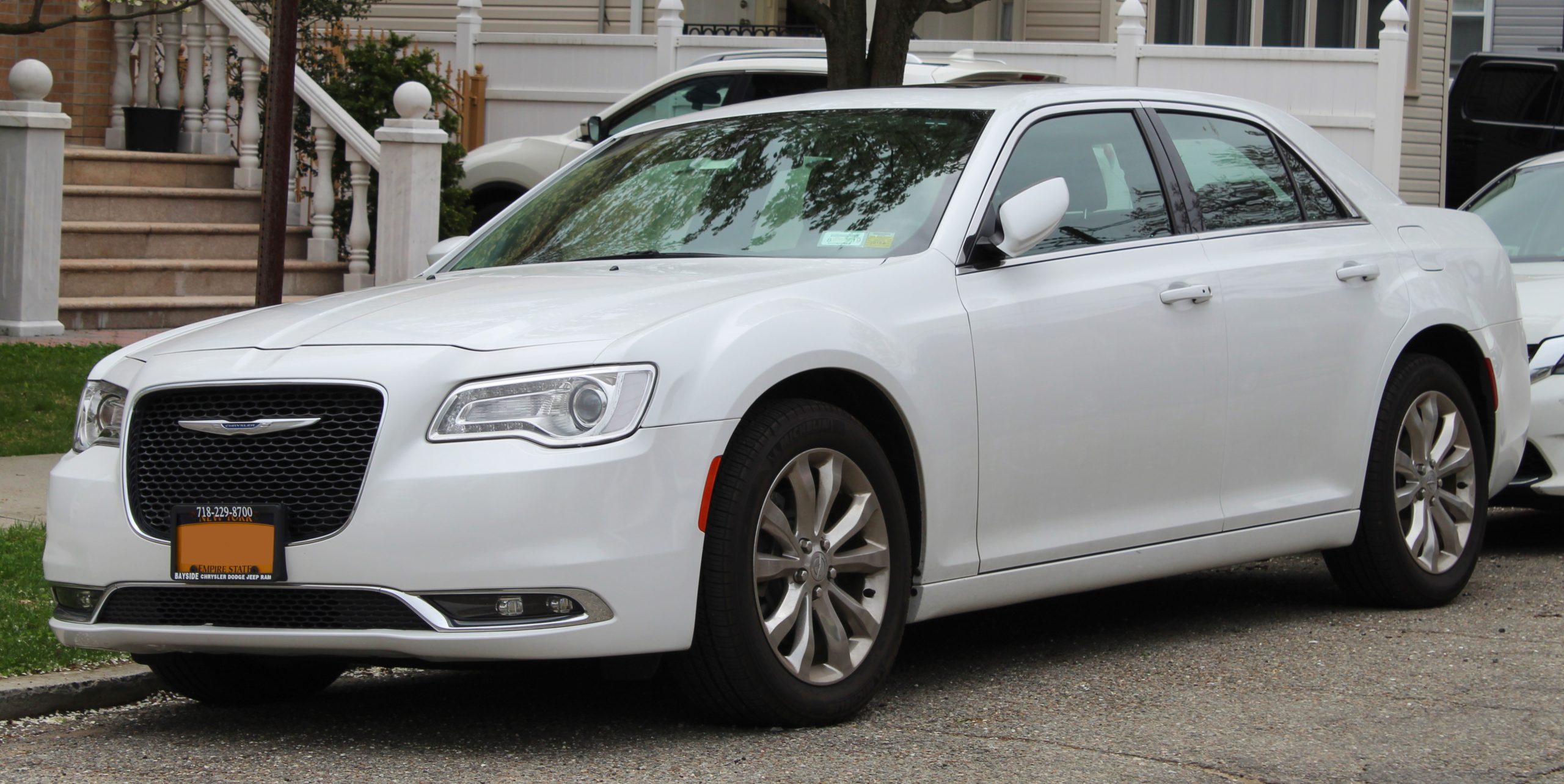
However, for those who frequently commute through congested areas, the wide turning radius can quickly become an everyday frustration. It’s not the most nimble sedan when it comes to tight turns, three-point maneuvers, or fitting into compact urban parking spots.
In essence, the Chrysler 300 is a cruiser, not a corner cutter. It’s built for comfort, power, and presence rather than agility.
Buyers who prioritize maneuverability over size may want to consider a smaller sedan, but those who value interior space and a commanding ride might be willing to accept the turning trade-off.
Ultimately, the Chrysler 300 is best suited for wide roads, open highways, and relaxed cruising, not for weaving through tight spaces or quick direction changes.
2. Tesla Model S — Futuristic Speed, But a Wide Swing
The Tesla Model S is known for its cutting-edge technology, blistering acceleration, and sleek design. It has redefined what a luxury sedan can be in the electric age.
However, for all its futuristic credentials, the Model S falls short in one very traditional metric: turning radius. With a curb-to-curb turning circle of approximately 39.8 feet, it’s one of the widest-turning sedans in the luxury segment.
This wide turning circle can be traced to the Model S’s long wheelbase and large battery pack layout, which creates limitations in how tightly the front wheels can pivot.
While it’s great for stability at speed—and essential for housing the vehicle’s enormous battery—it makes the car noticeably less nimble in tight city situations.
U-turns often require a full three-point maneuver, and parking in compact urban spots can become a trial of patience.
This is somewhat ironic, considering the Model S is packed with semi-autonomous features, including “Smart Summon” and advanced parking aids.
And while those technologies do help to a degree, they can’t completely compensate for physics and geometry when you need to turn around in a narrow alley or quickly pivot in a tight garage.
To Tesla’s credit, the Model S’s low center of gravity, thanks to its underfloor battery, gives it great handling at speed.
On twisty backroads and highway interchanges, it feels planted and secure. But those dynamics don’t translate to low-speed maneuverability, where it feels more like a full-size luxury car than the sleek EV it appears to be.
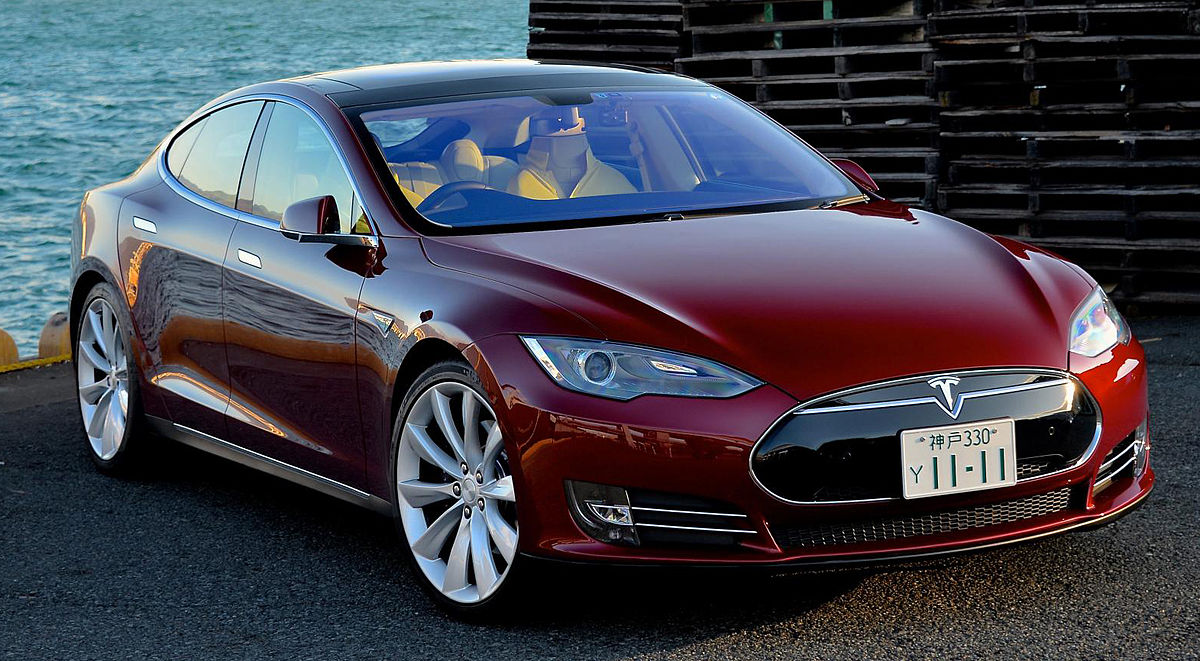
Inside, the Model S continues to impress with a minimalist yet premium cabin, enormous touchscreen, and class-leading EV range.
It’s an excellent long-distance cruiser and one of the fastest sedans ever made—but not the most convenient when navigating confined spaces.
In conclusion, the Tesla Model S is a technological marvel and performance benchmark, but its turning radius is a practical drawback.
For buyers frequently navigating tight city blocks or compact driveways, it’s a factor that shouldn’t be ignored, even in a car that otherwise feels straight out of the future.
3. Genesis G90 — Executive Luxury, Executive-Sized Turning Radius
The Genesis G90 is Hyundai’s flagship luxury sedan and a rising star in the full-size luxury segment. It delivers opulence, refinement, and an impressive value proposition against rivals like the BMW 7 Series and Mercedes-Benz S-Class.
But along with all that high-end comfort comes a familiar downside: a large turning radius. Measuring around 40.1 feet curb-to-curb, the G90 demands plenty of room to maneuver, making it one of the widest-turning sedans on the market today.
The culprit here is the G90’s long wheelbase and stretched-out body, which are essential for its plush, limousine-like rear seat space and composed highway demeanor.
While those characteristics make it a dream on open roads and for chauffeured experiences, they also make it clumsy in tight quarters.
Three-point turns become the norm in urban settings, and navigating narrow parking garages or U-turns on suburban roads can be a frustrating process.
It’s a trade-off Genesis makes intentionally: the G90 prioritizes comfort over agility, especially at low speeds.
However, it does try to ease the burden with features like surround-view cameras, parking sensors, and advanced driver-assistance systems that help mitigate the inconvenience of its physical size.
Inside, the G90 pampers both driver and passengers with ultra-soft leather, real wood trim, massaging seats, and an ultra-quiet cabin.
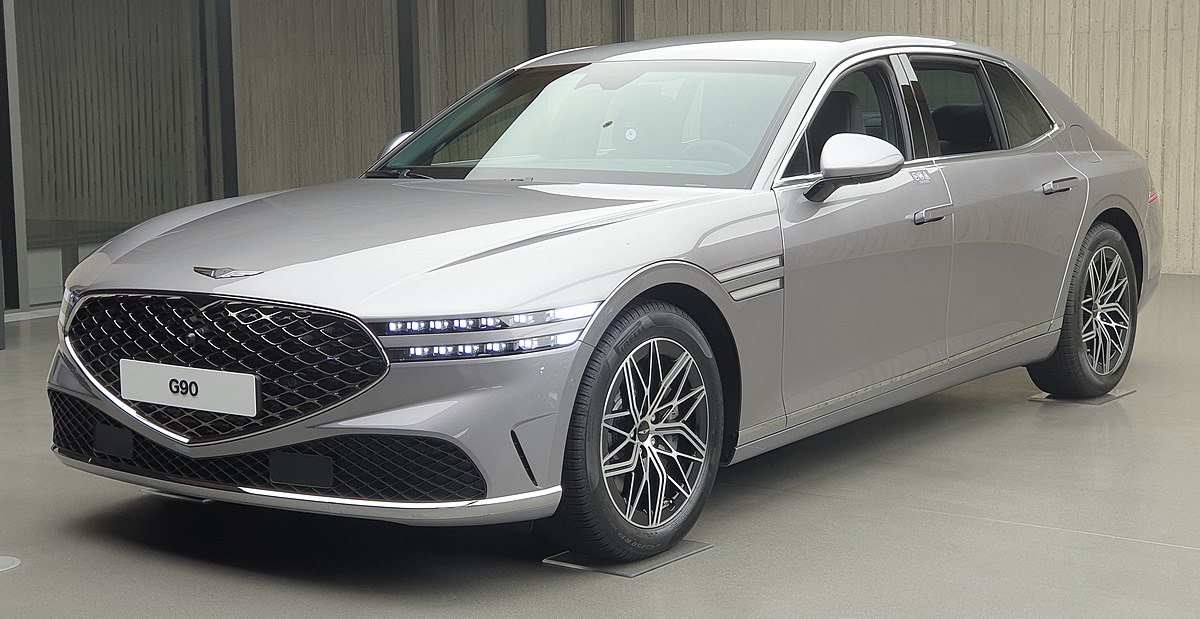
It’s a proper luxury experience, complete with a powerful V6 or V8 engine, smooth-shifting transmission, and buttery ride quality. Rear-seat legroom is class-leading, making it ideal for executives or long-distance passengers.
Yet, for daily driving in areas with tighter infrastructure—think crowded city streets or compact residential neighborhoods—the wide turning radius can feel limiting. The steering is light and smooth, but it simply can’t mask the size of the car when space is at a premium.
In summary, the Genesis G90 excels at what it sets out to do: provide an ultra-premium sedan experience with space, tech, and sophistication.
But it’s not built for agility, and its wide turning radius is a daily reminder that big luxury comes with equally big compromises when it comes to maneuverability.
4. Dodge Charger — Muscle Car Presence, Wide Turning Circle
The Dodge Charger blends classic American muscle car styling with the practicality of a full-size sedan. Its powerful engine options, bold design, and spacious interior have made it a favorite among those seeking performance with everyday usability.
However, this muscle car persona comes with a downside for tight maneuvers—the Charger has a wide turning radius of approximately 39.7 feet, making it one of the less nimble sedans in urban or confined environments.
This large turning circle is a result of the Charger’s long wheelbase, wide track, and hefty curb weight.
While these factors contribute to its impressive stability at high speeds and confident highway cruising, they hinder its ability to navigate tight corners, sharp U-turns, or congested parking lots with ease.
Maneuvering the Charger in city traffic or tight spaces often requires more planning and multiple adjustments, which can be frustrating for everyday driving.
Despite this, the Charger’s responsive steering and well-tuned suspension deliver a balanced driving experience on open roads. The car feels planted during aggressive acceleration and cornering, living up to its muscle car reputation.
Inside, the Charger offers a spacious cabin with comfortable seating and modern infotainment features, making it suitable for both spirited drives and daily commutes.
Its turning limitations become most apparent when parking in tight urban lots or navigating narrow residential streets.
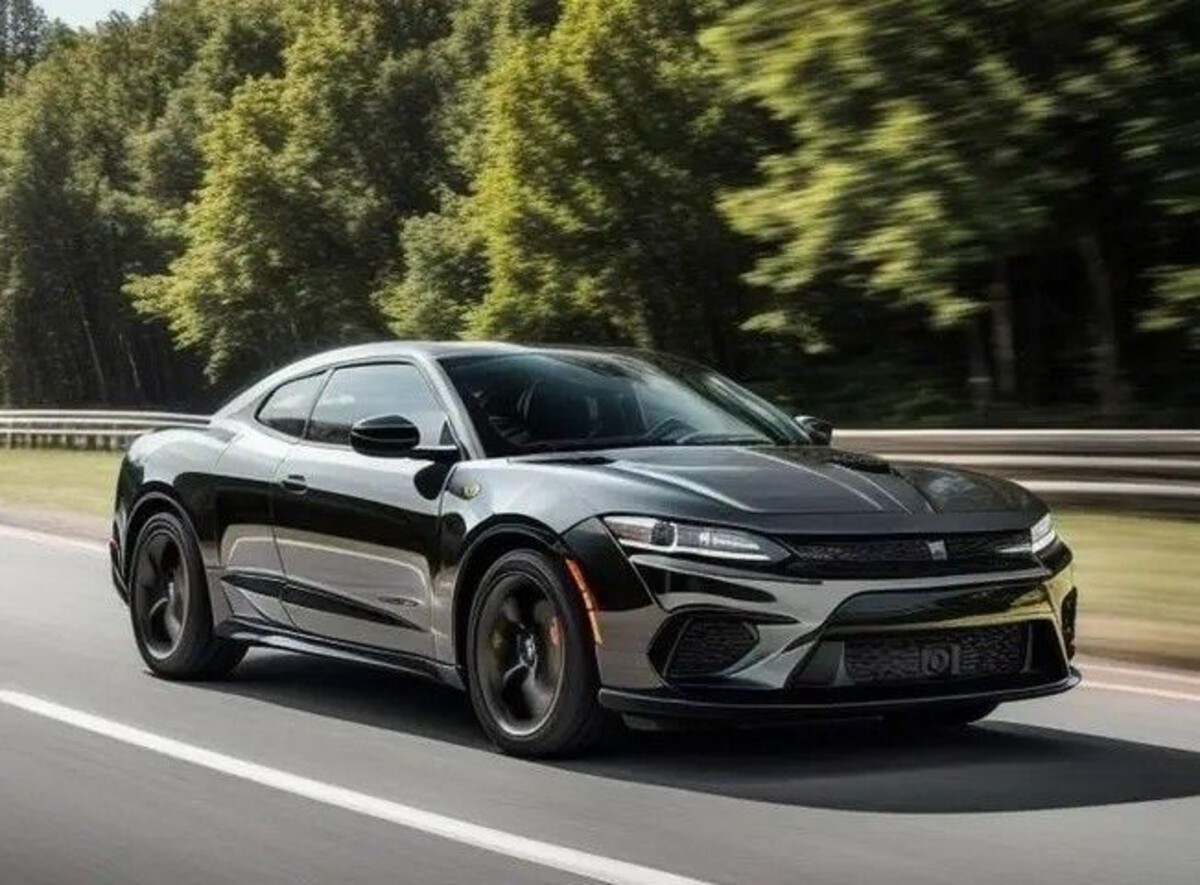
Drivers accustomed to smaller, more agile vehicles may find the Charger’s size and turning radius challenging at first, though those who prioritize power and presence often accept this trade-off.
In summary, the Dodge Charger excels as a full-size performance sedan, combining muscle car flair with practicality. However, its wide turning radius is a compromise, especially for those who frequently drive in congested or tight areas.
If maneuverability in confined spaces is a top priority, prospective buyers might consider other options, but for power enthusiasts who want commanding road presence, the Charger remains a compelling choice.
5. Mercedes-Benz S-Class — Flagship Luxury, Wide Turning Radius
The Mercedes-Benz S-Class has been the gold standard of full-size luxury sedans for decades, offering cutting-edge technology, sumptuous interiors, and a smooth, composed ride.
Yet, despite all its refinements, the S-Class struggles with a notably wide turning radius, typically around 39.8 feet curb-to-curb, making it one of the least nimble sedans when it comes to tight maneuvers.
This wide turning circle is largely due to the S-Class’s long wheelbase, wide stance, and sophisticated suspension system designed for maximum ride comfort and stability at highway speeds.
While these elements create a serene and commanding driving experience, they also mean the car needs more space to execute U-turns or navigate tight parking lots. Drivers will often find themselves making multiple-point turns where smaller sedans can get by with one.
However, the S-Class includes many technologies aimed at mitigating this limitation. Features such as active steering, 360-degree cameras, parking assist, and even rear-wheel steering (on certain models) help the driver maneuver more easily in confined spaces.
Rear-wheel steering, in particular, can reduce the effective turning radius by turning the rear wheels opposite the front at low speeds, aiding tight turns—but it can’t fully overcome the physical constraints of such a large sedan.
Inside, the S-Class pampers occupants with luxury leather, high-end materials, state-of-the-art infotainment, and countless comfort features. It remains a favorite for executives and those who seek a prestigious and comfortable ride.
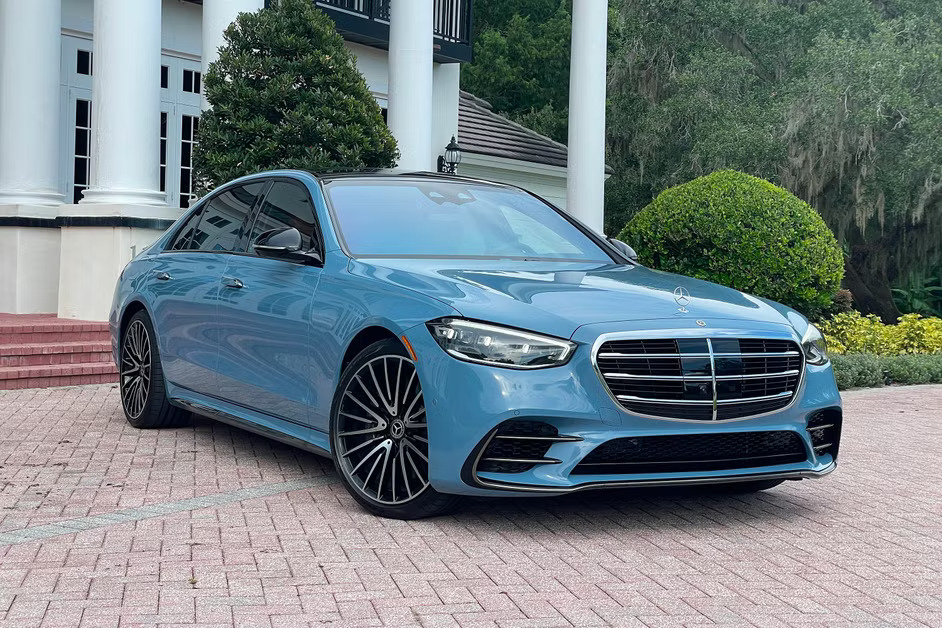
The large interior and smooth powertrains make it ideal for long-distance travel, but its size demands patience and planning when used in urban or suburban environments.
In summary, the Mercedes-Benz S-Class combines world-class luxury with some of the widest turning requirements in its class.
Buyers who primarily drive in tight city settings might find it challenging, but for those prioritizing comfort, prestige, and advanced tech, the S-Class remains an unmatched choice—if you can accommodate its turning limitations.
Turning radius is one of those subtle yet critical specs that can greatly impact the daily driving experience, especially for sedan buyers.
As we’ve explored, the difference between a tight and a wide turning circle can mean the difference between effortless parking and frustrating multi-point turns.
It can dictate how confidently you navigate narrow city streets, crowded parking garages, or residential cul-de-sacs. Understanding this balance is essential when choosing a sedan that suits your lifestyle and driving environment.
The sedans with the best turning radius—such as the Honda Civic, Toyota Corolla, Hyundai Elantra, Nissan Versa, and BMW 2 Series Gran Coupe—excel at agility and ease of maneuvering.
Their compact dimensions, efficient steering designs, and smart suspension setups allow for nimble handling and tight turns, making them perfect for urban and suburban drivers who frequently deal with tight spots or limited space.
Many of these vehicles also blend practicality with comfort and technology, proving that maneuverability need not come at the expense of style or features.
Conversely, the sedans with the widest turning radius—including the Chrysler 300, Tesla Model S, Genesis G90, Dodge Charger, and Mercedes-Benz S-Class—tend to be larger, more luxurious, or performance-focused models.
Their long wheelbases, wider bodies, and heavier frames contribute to stable highway cruising and spacious interiors but come with the trade-off of reduced low-speed agility.
While these vehicles impress with power, comfort, and advanced technology, their wide turning circles demand more space for everyday maneuvers, sometimes leading to frustration in tight environments.
Ultimately, the choice comes down to priorities and environment. If you live or work in dense urban areas or place a premium on ease of parking and quick direction changes, a sedan with a tight turning radius will serve you better.
On the other hand, if your daily driving involves wide-open roads, long-distance cruising, or you desire premium comfort and presence, a sedan with a larger turning circle might be a reasonable trade-off.
In any case, understanding how turning radius influences your interaction with your car can help you make a more informed, satisfying choice—turning every drive into a smoother, more confident experience.
Also Read: 5 SUVs With Best Off-Road Approach Angles And 5 With Worst

